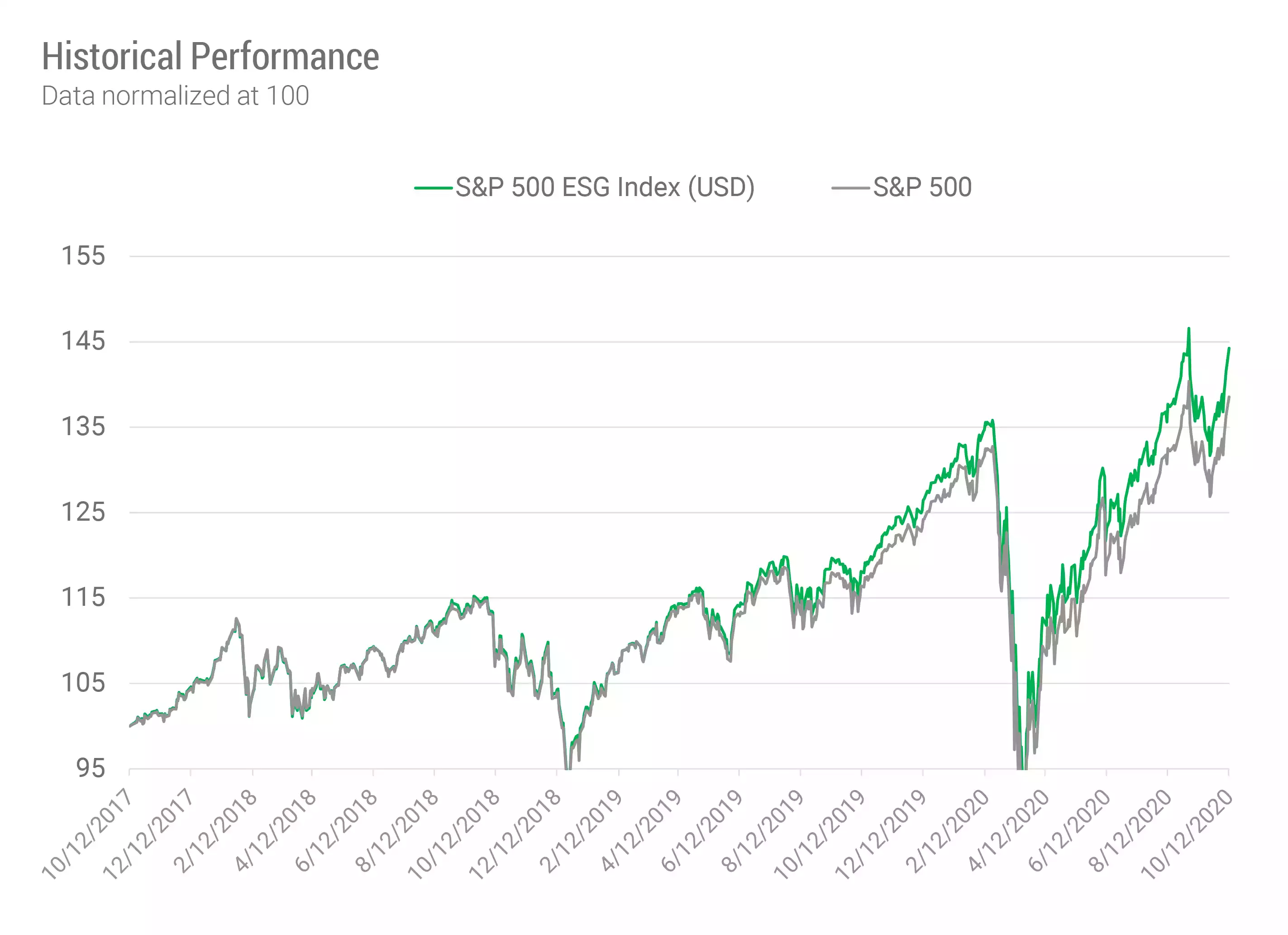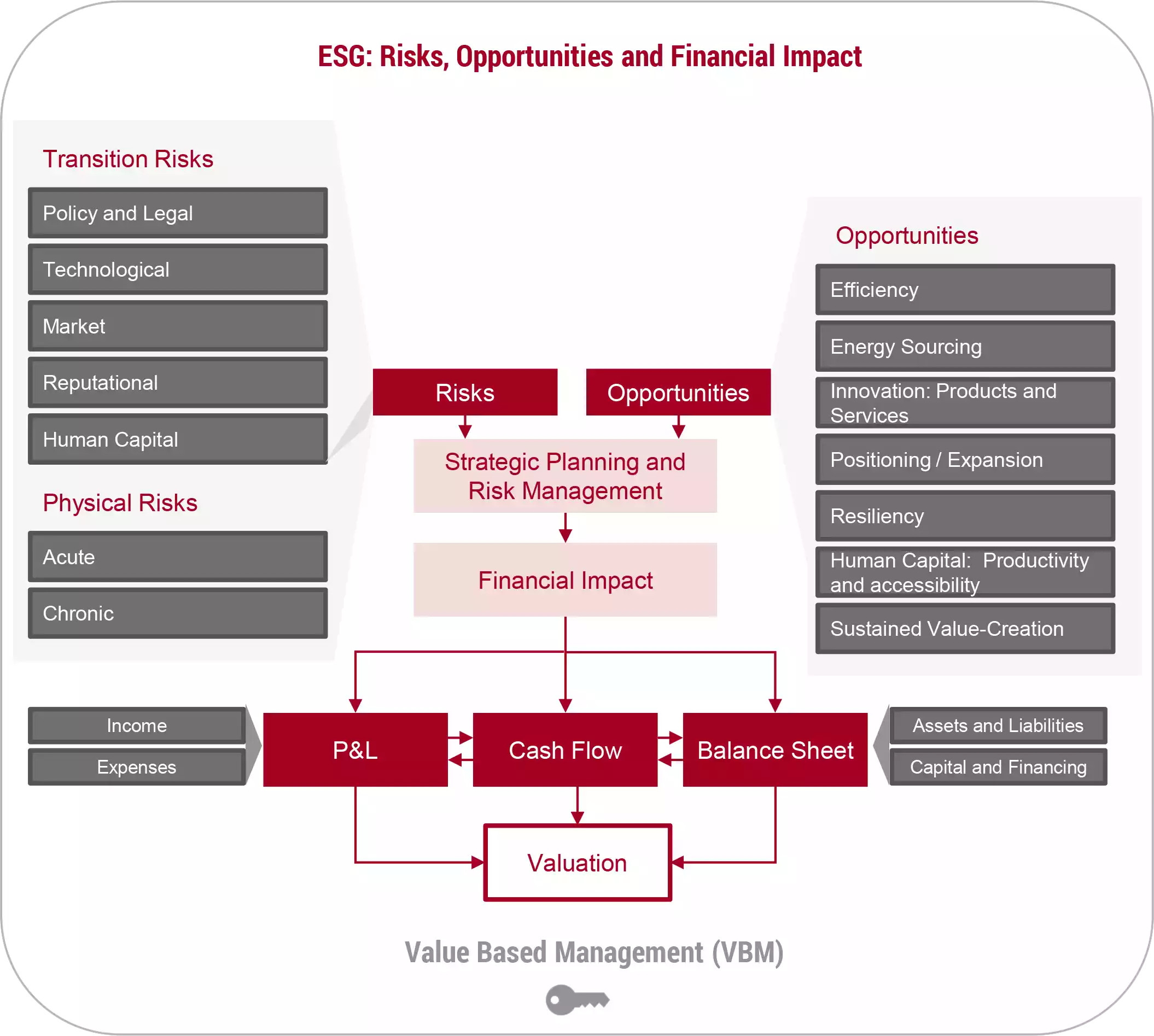ESG and Value Creation


ESG and Value Creation
12/28/2020
In recent years, one of the issues that has emerged of relevance to investors, entrepreneurs, and governments, is the value of ESG (environmental, social, and governance) considerations in capital markets.
ESG implies different things to different people and for different asset classes, however, its principles and philosophy tend to be shared among investors. In the past, investments in “social responsibility” focused mainly on managing reputational risk, regulatory compliance, and adjusting to “mega-trends” (demographic changes, resource scarcity, etc.). Today ESG has become a key criterion for identifying investment opportunities and deeply analyzing potential risks and returns.
The purpose of an organization and its capacity for profitability are in no way inconsistent; in fact, they are inextricably linked. A common misconception is that ESG negatively impacts the financial performance of organizations, but several studies have shown a link between ESG investment, resilience, and better long-term economic performance.1
Our founder and former CEO, Joel M. Stern, highlights this point clearly: “It is impossible to achieve maximum value for the stockholders if the asset management of the company does not include the management of stakeholders. This means that until the company establishes an optimal policy, it will be impossible to reach appropriate levels of market valuation. EVA® and Value Based Management demonstrate the important role of corporate culture in optimizing profits and avoiding financial scandal.”



Source: Global GSP
It is important to clarify that not all ESG efforts create value; just because something is categorized as a good ESG practice does not mean that it will create value for all organizations.
Case study: An Oil and Gas company in Latin America wanted to implement solar energy to change a gas facility and thus contribute to the reduction of CO2 emissions. They needed to decide whether this project was suitable for them. The company organized a multidisciplinary team that conducted in-depth studies about energy conversion, local community effects, environmental impact and costs, and the research found that the number of solar panels needed to convert the same amount of energy provided by the gas plant would bring additional disposal costs and additionally, it would dramatically increase waste and land use. As a result, the initiative to implement this solar energy in their geographic and economic region would have resulted not only in additional processes, but also higher land requirements, more CO2 emissions for decommissioning, and a higher cost of the project that would result in the destruction of value.
ESG needs to be aligned with an organization's value proposition and its long-term sustainability. The main point is to foster a culture where investments can be analyzed from the point of view of the potential to create sustainable value over time for all stakeholders.
“Lip-service is cheap”
Organizations that integrate ESG within their value-creation framework manage to reduce risk and/or improve profitability thanks to a deeper analysis of trends and information. Similarly, analysts and investors can easily determine whether organizations are really taking action and the impact of these actions on business performance.
For example, some investors observe the automotive industry to review how organizations are reacting to trends related to EV (electric vehicles), safety, autonomy, and efficiency to improve their forecasts and investment decisions. The Corporate Finance Institute (CFI) has reported that professionals investing in companies with strong ESG management are likely to outperform their competitors in the long run.
As the conventional ESG framework keeps developing and maturing, there are still areas that need improvement, especially relating to concerns about effective and actionable reporting, measurement, standardization, and communication. Companies that claim to promote ESG practices (i.e., diverse talent, “sustainable" practices, donations), but do not actually practice them, are risking easily falling to public scrutiny and will be penalized for this.
How can ESG impact economic performance and valuation?
- Increased revenue
- Innovation: Development of new products and services aligned with new consumer trends
- Access to new customers and markets that give a premium in value to transparent and sustainable products and practices
- Access to greater diversity of resources through stronger relationships with government, communities, customers, and suppliers
- Corporate governance system that manages the interest of stakeholders and delivers long-term value to its shareholders
- Cost reduction
- Energy efficiency and lower emissions costs
- Innovation in products, services, and processes: Quality, packaging, safety, agility in decision-making
- Reduction of waste-management costs
- Less attrition of collaborators
- Reduction of legal costs from more stringent regulations
- Resilience:
- Adaptability to changes in market behavior. A clear, consistent, and well-executed purpose creates loyal workers, clients, and investors
- Resilience to dramatic changes in sources of energy, raw material, and property
- Increased labor productivity
- Strong correlation between employee motivation and organizational purpose, with societal impact derived from their contribution at work
- Greater ease of attracting more diverse, knowledgeable, and committed employees, and less turnover
- Better investment opportunities
- Higher revenues, lower costs, and better risk management lead to better market valuations compared to peers
- A detailed analysis of risk and return options is key for investors. Companies that identify and measure the impact of ESG within their industry have premium valuations and access to capital
- Capital allocation aligned with long-term returns and value creation.
- Positioning and reputation
- Brand positioning within the industry: Deliver sustainable and long-term products, services, and a governance structure that enables government alignment with organizational purpose, decision-making, and market expectations
- Increased room for maneuvering with regulators and strategic positioning with governments, communities, customers, and suppliers
- A strong reputational basis derived from strong values and a positive working relationship with all relevant stakeholders
- Positioning with large suppliers or customers who demand good ESG practices within their bidding and contracting processes



Source: Author adaptation from: Climate Related Risks, Opportunities and Financial Impact: 2017 TCFD Report
Key challenge:
Leaders and investors have tired of “the existence of multiple ESG reporting frameworks and the lack of consistency and comparability of these metrics as pain points, preventing companies from credibly demonstrating to all stakeholders their progress on sustainability and their contributions to the SDGs. . . . To identify a set of universal, material ESG metrics and recommended disclosures, these metrics should be capable of verification, and assurance, to enhance transparency and alignment among corporations, investors and all stakeholders.”2.
A look forward
Organizations are increasingly including ESG within their strategy and reporting their efforts on the ESG front, demonstrating a better understanding of the market, trends, risks, and opportunities that ESG brings. Notwithstanding this positive move forward, there is still a lot of work to be done on improving reporting to ensure that reporting data meets the criteria of relevance, clarity, consistency, comparability, materiality, and objectivity. Leaders of organizations, analysts, and investors who raise awareness of their impact on society as a whole and consider related risk-performance opportunities can build more resilience and long-term value.
A key tool for an effective implementation of ESG is Value Based Management (VBM), which focuses all organizational processes on a single goal: the creation of sustainable and long-term value. VBM allows for a 360° look at an organization, its peers, and the environment, thus facilitating the defining of strategy, guidance of key processes and activities, and delineation of metrics that are truly aligned with the creation of long-term value for all parties involved, and therefore shareholders as well.
Karen Cortés
______________________
¹S&P Global: The ESG Advantage, exploring links to corporate financial performance: SPG Global Research insight: Accounting for Climate: The Next Frontier in ESG; ESG and financial performance: aggregated evidence from more than 2000 empirical studies (2015), Gunnar Peace, Timo Busch & Alexander Bass, Journal of Sustainable Finance & Investment, 5:4, 210-233, DOI: 10.1080/20430795.2015.1118917
2Measuring Stakeholder Capitalism: Towards Common Metrics and Consistent Reporting of Sustainable Value Creation